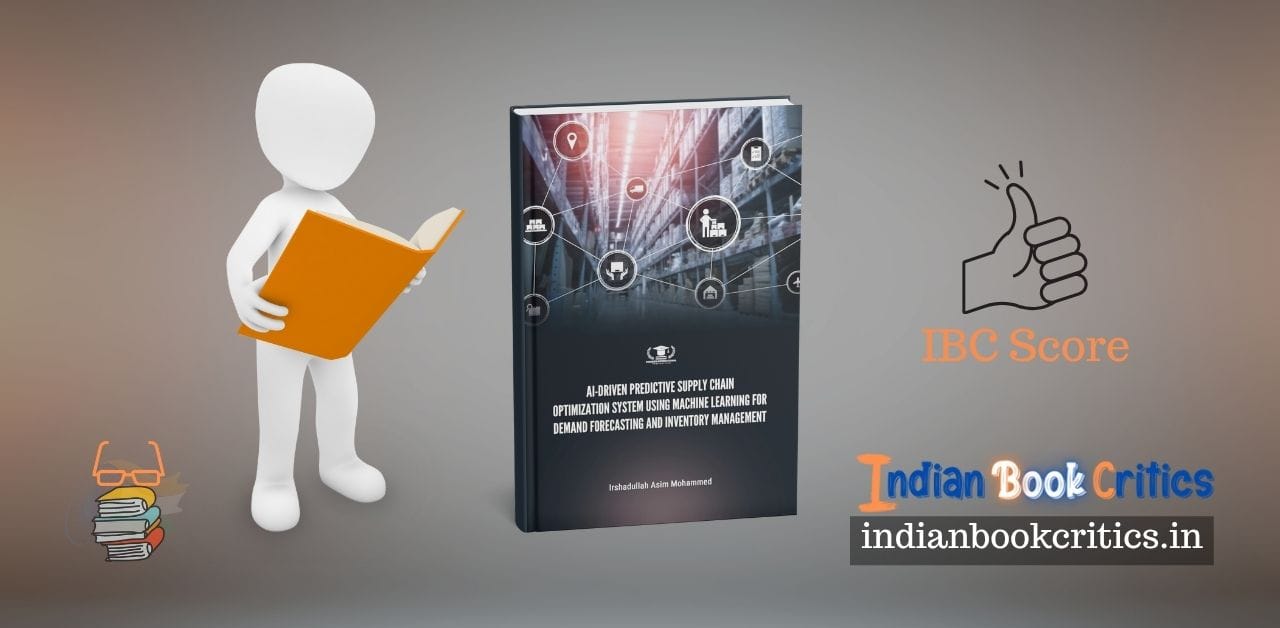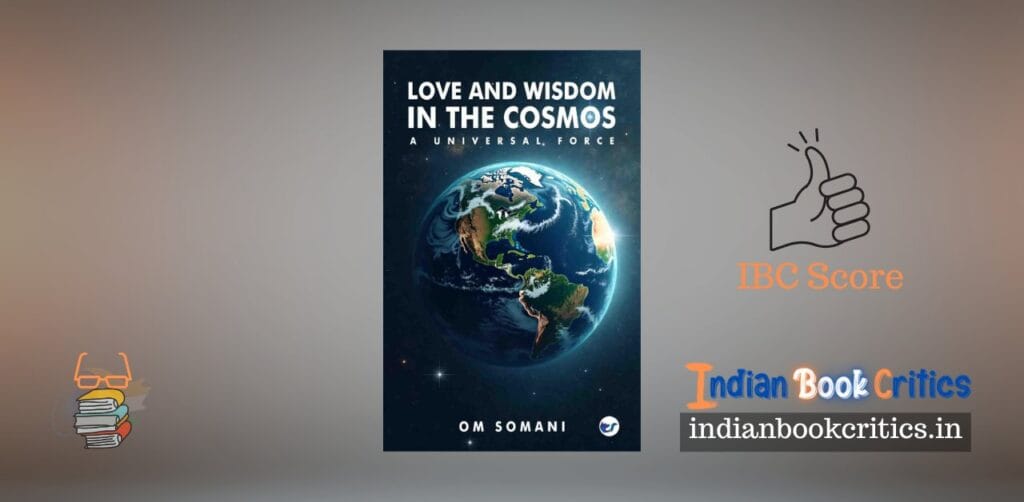Irshadullah Asim Mohammed’s AI-Driven Predictive Supply Chain Optimization System Using Machine Learning for Demand Forecasting and Inventory Management (ZYKRA Publications Pvt. Ltd., December 2024) enters the academic and industrial discourse at a crucial juncture when artificial intelligence (AI) and machine learning (ML) are no longer theoretical promises but transformative forces redefining operational intelligence. The book, an ambitious and meticulous work of research, bridges the domains of computational intelligence and supply chain management (SCM), offering a comprehensive view of how AI-powered predictive systems can reshape traditional supply chain paradigms. It stands as both a technical compendium and a conceptual guide, addressing researchers, practitioners, and students alike.
The author’s principal contribution lies in integrating foundational theory with practical frameworks, enabling a nuanced understanding of how AI and ML models can address the dual challenges of demand forecasting and inventory management, two of the most volatile yet crucial elements in SCM. Through fourteen systematically organised chapters, the work traverses the evolution of supply chain principles, introduces machine learning fundamentals, delves into implementation strategies, and concludes with reflections on ethical, technological, and futuristic aspects. The result is a scholarly text that not only informs but also stimulates intellectual engagement with one of the most dynamic areas of applied AI.
The book was first published in December 2024.
Laying the Foundations: From Classical SCM to Intelligent Systems
The opening chapter, “Fundamentals of Supply Chain Optimization,” situates the reader within the traditional landscape of SCM before introducing the concept of AI-driven transformation. Mohammed demonstrates a firm grasp of classical theories of logistics, cost optimisation, and demand-supply equilibrium, grounding his discussion in the pragmatic realities of modern enterprises. By contrasting traditional, deterministic approaches, rooted in linear programming and heuristic models, with data-driven, adaptive frameworks, the author establishes the need for predictive intelligence in an era defined by complexity and volatility.
Particularly noteworthy is the emphasis on risk management and global integration, which positions SCM as a dynamic system rather than a linear process. This perspective aligns with the contemporary shift toward systems thinking and cyber-physical supply networks, where visibility and resilience are as crucial as cost efficiency. The author’s treatment of these fundamentals prepares the reader for the deeper algorithmic discourse that follows.
From Algorithms to Action: Machine Learning in Supply Chain Contexts
Chapter Two, “Introduction to Machine Learning in Supply Chain,” functions as a bridge between operational theory and computational application. Mohammed’s exposition of supervised, unsupervised, and reinforcement learning is clear, pedagogically sound, and contextually relevant. What distinguishes this section is its alignment of abstract machine learning principles with specific SCM use cases, such as supplier segmentation, dynamic pricing, and adaptive routing.
Unlike many technically oriented texts that lose accessibility in mathematical formalism, Mohammed maintains a balance between conceptual clarity and technical precision. He elaborates on how reinforcement learning, for instance, mirrors real-world decision-making by continuously updating policy strategies based on environmental feedback. This applied view of ML in logistics operations distinguishes the book from conventional AI textbooks that often neglect domain specificity.
Demand Forecasting: The Analytical Heart of Supply Chain Agility
Chapters Three to Five constitute the analytical core of the book, focusing on demand forecasting, a domain where predictive analytics can produce a measurable impact. Chapter Three, “Demand Forecasting in Supply Chains,” situates forecasting not merely as a numerical exercise but as a strategic function that aligns production, procurement, and distribution. The author underlines how accurate forecasts can mitigate the perennial issues of overstocking and stockouts, thereby strengthening both profitability and customer satisfaction.
In Chapter Four, “Machine Learning Models for Demand Forecasting,” Mohammed meticulously classifies models by type and applicability, covering regression-based techniques, ensemble learning, and neural architectures such as Recurrent Neural Networks (RNNs) and Long Short-Term Memory (LSTM) models. The inclusion of deep learning models indicates the book’s contemporaneity and awareness of cutting-edge methodologies that handle non-linear patterns and temporal dependencies in demand data.
The fifth chapter adds further credibility through case studies that illustrate the translation of theory into industry success stories. The examples, ranging from retail chains reducing stockouts to food industries improving the turnover of perishable goods, demonstrate the author’s practical engagement with real-world challenges. Such inclusions not only validate theoretical claims but also provide empirical grounding for the argument that AI-driven forecasting transcends academic abstraction.
Reimagining Inventory: AI as a Decision-Making Partner
Chapters Six and Seven turn toward inventory management, the operational counterpart of forecasting. In “Overview of Inventory Management,” Mohammed identifies the traditional constraints of manual oversight, delayed data visibility, and siloed information systems. By reinterpreting these issues through the lens of predictive analytics, he effectively advocates for an intelligent inventory ecosystem that can make autonomous adjustments.
The succeeding chapter, “AI-Driven Inventory Optimization Models,” introduces reinforcement learning and stochastic modelling as the next frontier. The reinforcement learning discussion is particularly insightful, presenting AI as a self-improving decision-maker that can optimise multi-echelon inventory networks through trial and feedback. The stochastic approach, on the other hand, is appreciated for its probabilistic handling of uncertainty, a vital quality in volatile markets. Collectively, these models represent the author’s sophisticated understanding of the adaptive and probabilistic nature of modern supply systems.
From Theory to Practice: Architecture, Implementation, and Evaluation
Perhaps the book’s most practically valuable section is found in Chapters Eight through Eleven, which detail the design, implementation, and evaluation of predictive systems. Chapter Eight, “Applications and Real-World Implementations,” features cross-sectoral examples that highlight how AI reshapes industries ranging from e-commerce to healthcare logistics. The inclusion of sector-specific metrics such as Inventory Turnover Ratio, Lead Time Reduction, and Order Fulfilment Accuracy adds rigour, making the analysis quantifiable and results-oriented.
Chapter Nine, “Building an AI-Driven Predictive Optimization System,” is arguably the book’s technical centrepiece. The author provides a comprehensive roadmap that encompasses architectural design, data pipeline construction, model integration, and user interface development. The architectural clarity distinguishes this work from many AI monographs that neglect system-level engineering considerations. Particularly commendable is the emphasis on scalability and modularity, which reflects an understanding of enterprise-grade system deployment rather than prototype experimentation.
The tenth chapter, addressing Implementation Challenges and Solutions, expands the conversation beyond technology to include data governance, organisational readiness, and legacy integration. The treatment of data quality as both a technical and managerial issue resonates with current debates on digital transformation maturity models. Mohammed’s recognition that organisational resistance, not algorithmic limitations, is often the primary bottleneck lends the book sociotechnical depth.
Following this, Chapter Eleven, “Metrics for Evaluating Predictive Systems,” consolidates the evaluation framework. The author’s methodical explanation of metrics such as MAE (Mean Absolute Error) and RMSE (Root Mean Square Error), as well as Forecast Bias, illustrates his awareness of the subtleties involved in model validation. The inclusion of SCM-specific KPIs such as On-Time Delivery (OTD) and Perfect Order Rate bridges the analytical with the operational, ensuring that predictive success translates into business value.
Adaptive Intelligence and Continuous Learning
The twelfth chapter, “Continuous Learning and System Enhancement,” extends the discussion toward sustainability and adaptability. These two traits are essential for intelligent systems operating in dynamic markets. Mohammed’s articulation of feedback loops as a means for continuous model retraining reflects a systems-theoretic view of AI. The chapter effectively reframes predictive analytics from being a static solution to an evolutionary process, constantly recalibrating itself based on environmental signals. This conceptualisation aligns with the emerging philosophy of Industry 5.0, where human oversight and machine intelligence co-evolve to maintain operational harmony.
Synergy with Emerging Technologies: IoT and Blockchain
Chapter Thirteen, “Integration of IoT and Blockchain in Predictive Systems,” is a forward-looking addition that acknowledges the interdisciplinary nature of supply chain digitisation. The author convincingly argues that IoT sensors and RFID technologies enrich the data ecosystem, feeding real-time, granular information into AI models. The discussion on blockchain, positioned as the guarantor of data transparency and security, adds a much-needed ethical and technological dimension. Mohammed correctly identifies that predictive systems, to be trusted and adopted, must also be auditable and tamper-proof, particularly when operating across global, multi-stakeholder networks.
The synthesis of IoT, blockchain, and AI reflects the author’s holistic grasp of the Fourth Industrial Revolution and its convergence-driven ethos. This chapter, though brief compared to earlier sections, enhances the work’s interdisciplinary relevance and future-readiness.
Vision, Ethics, and the Future of Intelligent Supply Chains
The final chapter, “The Future of AI in Supply Chain Management,” encapsulates the text’s forward-looking ethos. Here, Mohammed articulates a vision of autonomous supply chains, guided by real-time analytics, robotics, and self-learning algorithms. Importantly, he does not neglect the ethical dimensions of this transformation. His discussion of data privacy, algorithmic bias, and workforce displacement reflects a responsible scholarly voice, one that is aware of the socio-economic disruptions that accompany technological acceleration.
The author’s commentary on sustainability, framing AI as a potential ally in achieving environmental goals through optimised logistics and waste reduction, is particularly timely. It aligns with current global initiatives toward green AI and the responsible deployment of technology. This synthesis of ethics, efficiency, and ecology marks a mature conclusion to what is otherwise a highly technical volume.
Evaluation and Scholarly Significance
From a critical standpoint, Mohammed’s book excels in clarity, organisation, and breadth. Each chapter follows a pedagogical progression, gradually elevating the reader from conceptual familiarity to applied mastery. The balance between theoretical exposition and empirical validation makes the text accessible to both academics and practitioners. Moreover, the incorporation of real-world case studies lends credibility and contextual richness.
Stylistically, the prose is academic yet approachable. The author avoids excessive mathematical formalism, ensuring accessibility without sacrificing analytical depth. The layout—supported by definitions, models, and structured argumentation—resembles a graduate-level textbook suitable for courses in AI applications, operations research, or industrial engineering.
However, a minor limitation lies in the relative brevity of the ethical and policy-oriented discussions. While these are addressed in the final chapter, a more sustained engagement with regulatory frameworks (such as data protection laws and AI governance models) would have enriched the discourse further. Nonetheless, the inclusion of these issues marks an awareness that many technical treatises often overlook.
In terms of comparative scholarship, Mohammed’s work situates itself alongside seminal contributions, such as Christopher Tang’s writings on supply chain analytics and David Simchi-Levi’s research on predictive supply chain systems. Yet, it distinguishes itself by providing an integrated roadmap for AI-driven optimisation, something rarely presented with such architectural clarity.
The book’s multidisciplinary relevance also deserves mention. While its immediate domain is SCM, the framework presented has implications for finance, healthcare, logistics, and energy sectors, where predictive intelligence governs operational success. In this sense, the book is both specialised and versatile—rooted in SCM but expansively applicable.
Conclusion
In summary, “AI-Driven Predictive Supply Chain Optimization System Using Machine Learning for Demand Forecasting and Inventory Management” by Irshadullah Asim Mohammed is a timely and authoritative contribution to contemporary scholarship and professional practice. It synthesises the technical precision of machine learning with the strategic imperatives of supply chain management, producing a text that is both intellectually rigorous and practically grounded.
For readers already familiar with AI’s integration into business analytics, the book offers a deeper, system-level understanding of how predictive intelligence can redefine enterprise agility. For newcomers, it serves as an educational scaffold, mapping the journey from theoretical comprehension to operational deployment.
Ultimately, Mohammed’s work exemplifies how academic writing, when informed by real-world relevance and interdisciplinary foresight, can inspire innovation while guiding responsible implementation. It stands as an essential resource for those seeking not merely to understand the digital transformation of supply chains but to participate meaningfully in it.
Get a copy from Amazon India – click here.
Review by Lalan Jha for Indian Book Critics




